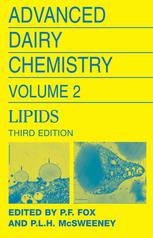

Most ebook files are in PDF format, so you can easily read them using various software such as Foxit Reader or directly on the Google Chrome browser.
Some ebook files are released by publishers in other formats such as .awz, .mobi, .epub, .fb2, etc. You may need to install specific software to read these formats on mobile/PC, such as Calibre.
Please read the tutorial at this link: https://ebookbell.com/faq
We offer FREE conversion to the popular formats you request; however, this may take some time. Therefore, right after payment, please email us, and we will try to provide the service as quickly as possible.
For some exceptional file formats or broken links (if any), please refrain from opening any disputes. Instead, email us first, and we will try to assist within a maximum of 6 hours.
EbookBell Team

4.4
32 reviewsThe Advanced Dairy Chemistry series was first published in four volumes in the 1980s (under the title Developments in Dairy Chemistry) and revised in three volumes in the 1990s. The series is the leading reference on dairy chemistry, providing in-depth coverage of milk proteins, lipids, lactose, water and minor constituents.
Advanced Dairy Chemistry Volume 2: Lipids, Third Edition, is unique in the literature on milk lipids, a broad field that encompasses a diverse range of topics, including synthesis of fatty acids and acylglycerols, compounds associated with the milk fat fraction, analytical aspects, behavior of lipids during processing and their effect on product characteristics, product defects arising from lipolysis and oxidation of lipids, as well as nutritional significance of milk lipids.
Most topics included in the second edition are retained in the current edition, which has been updated and considerably expanded. New chapters cover the following subjects: Biosynthesis and nutritional significance of conjugated linoleic acid, which has assumed major significance during the past decade; Formation and biological significance of oxysterols; The milk fat globule membrane as a source of nutritionally and technologically significant products; Physical, chemical and enzymatic modification of milk fat; Significance of fat in dairy products: creams, cheese, ice cream, milk powders and infant formulae; Analytical methods: chromatographic, spectroscopic, ultrasound and physical methods.
This authoritative work summarizes current knowledge on milk lipids and suggests areas for further work. It will be very valuable to dairy scientists, chemists and others working in dairy research or in the dairy industry.
P.F. FoxPh.D., D.Sc. is Professor Emeritus of Food Chemistry and
P.L.H. McSweeney Ph.D., is Senior Lecturer in Food Chemistry at University College, Cork, Ireland.